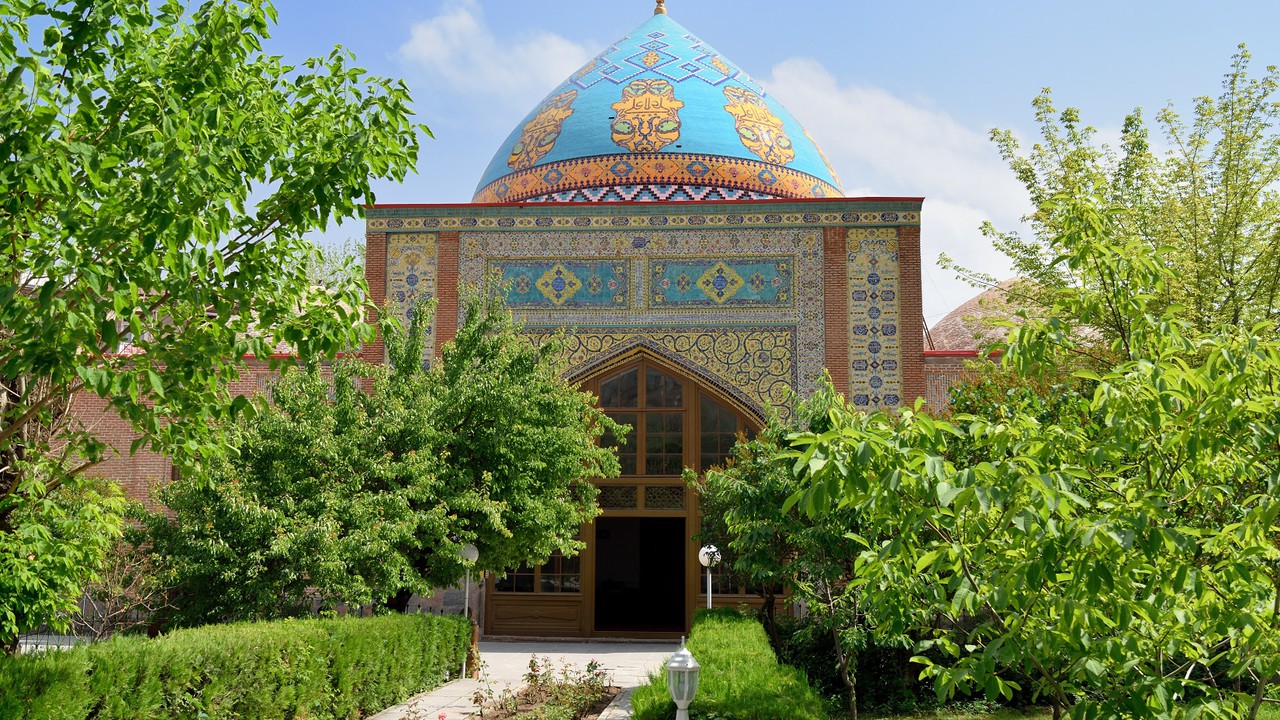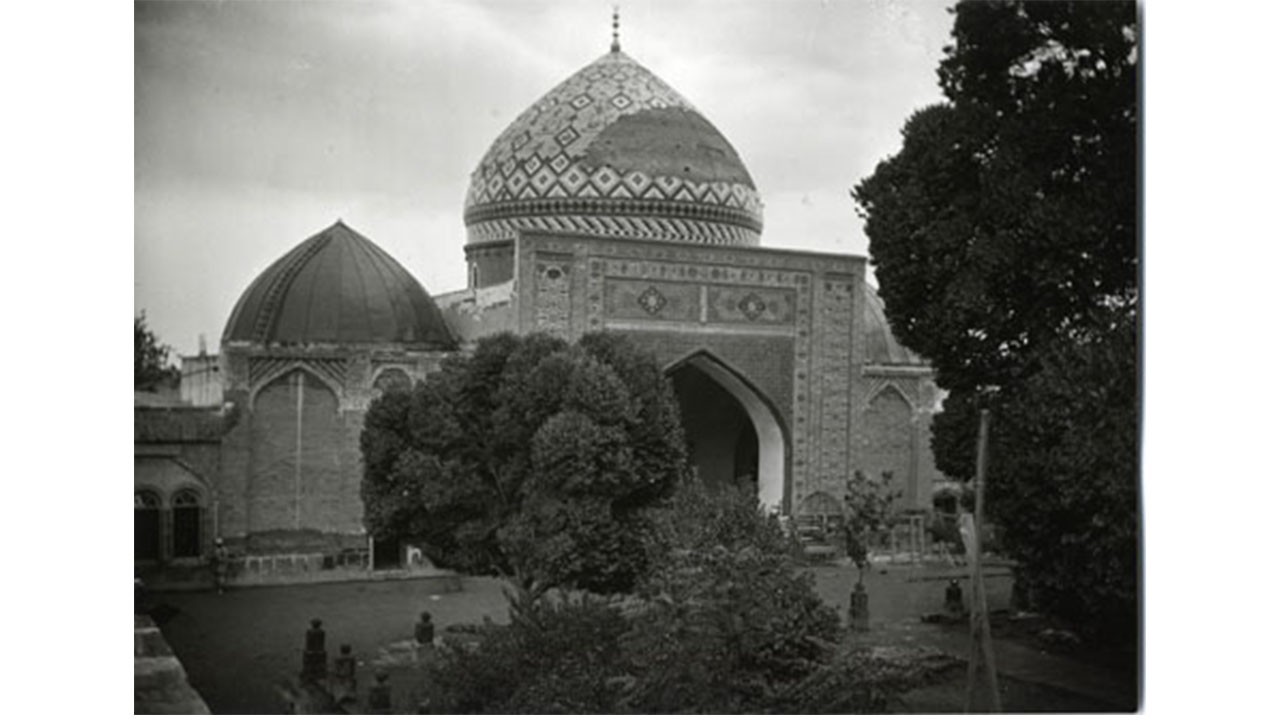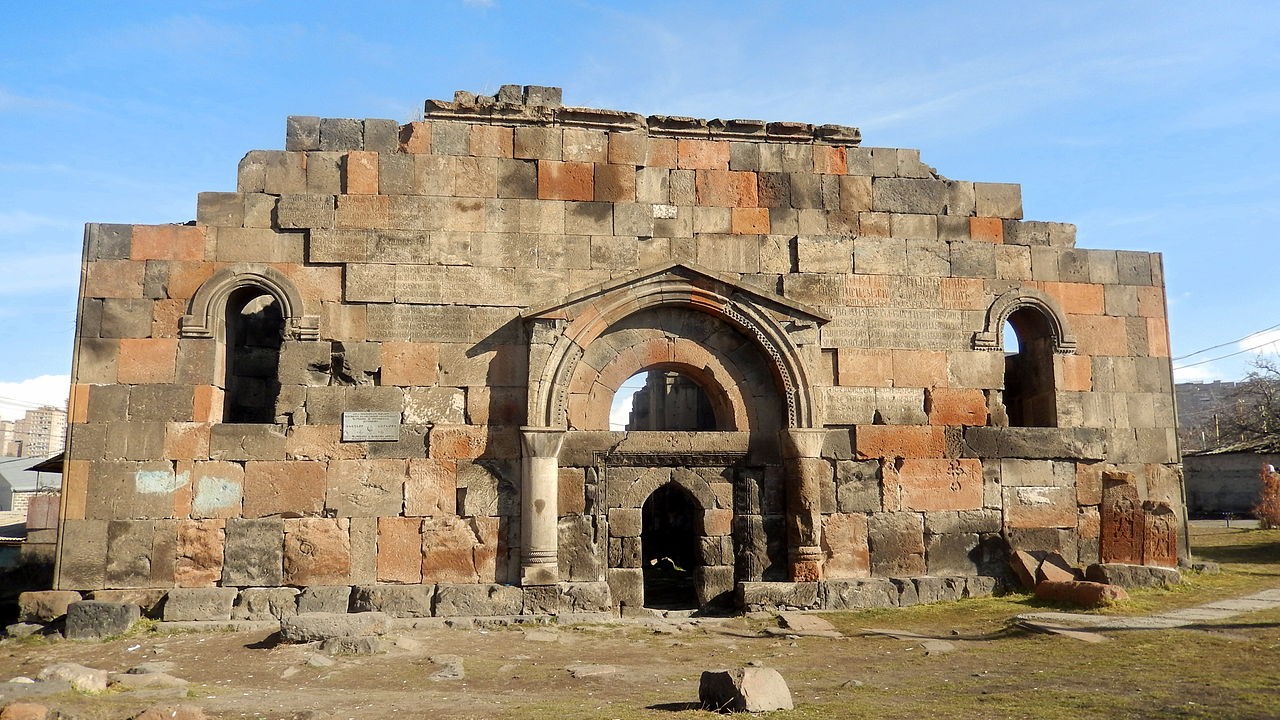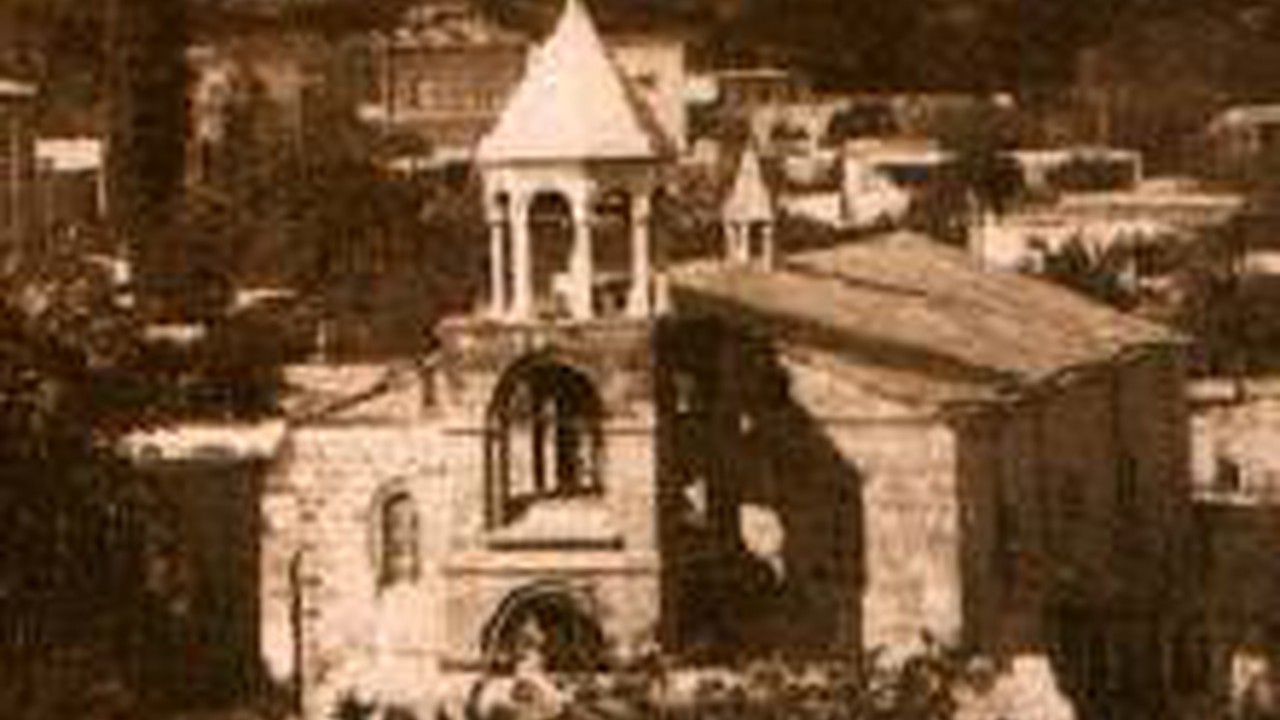PLACES OF WORSHIP

State index: 1.6.150
Built by Huseyn Alikhan, Sardar of Yerevan
The mosque is located at 12th Mashtots Avenue, in a densely developed area. According to the inscription on the southern gate, it was commissioned by Huseyn Ali Khan, the Persian Khan of Erivan, and constructed between 1765 and 1766. It was the largest and most significant mosque in Yerevan, designed in the architectural style characteristic of Shia mosques.
English traveler Henry Lynch, who visited Armenia at the end of the 19th century, praised the mosque, particularly noting the use of colored glass in its design. Lynch also highlighted the presence of a spiritual-elementary school within the mosque.
During the Soviet era, when many religious structures were being demolished, the mosque was preserved and placed under state control thanks to the efforts of Yeghishe Charents and other Armenian intellectuals.
From 1937 to 1982, the mosque housed the Yerevan History and Natural Science Museums, and its smaller hall was later used as a planetarium. In 1937, a door was installed between the two main halls of the mosque to facilitate museum operations. Renovations were carried out in 1940 and again in 1972.
After Armenia gained independence, the Iranian government requested the mosque be handed over to the Iranian Embassy. It was reconstructed from 1994 to 1998 with funds provided by Iran. In 2006, the dome with the spacious facet was repaired.
The mosque now serves as both a place of worship for Shiites and a spiritual and cultural center. It hosts various events, including conferences, exhibitions, and courses. The complex features a rectangular floor plan measuring 97.2 by 66.5 meters, with a 71 by 47 meter inner courtyard around which the structures are arranged. There are three entrances: large gates to the south and west, and a smaller door to the east leading to the courtyard. In the southwestern corner of the complex stands a tall, circular minaret, 20 meters in height.
The prayer halls are situated in the northern and southern sections of the complex, while the educational cells are located in the eastern and western parts. These cells are square, vaulted, and feature arcaded halls that open towards the courtyard. The courtyard is paved with tuff and includes a stone pool with a fountain.
The buildings in the complex are constructed entirely of brick. The domes and minaret are adorned with blue, yellow, and green glazed brick tiles. The mosque is considered the finest Persian mosque in the South Caucasus (Transcaucasia). The use of glazed bricks in various colors is executed with exceptional skill, showcasing a vibrant and refined Oriental aesthetic.
Scientific Research Centre of Historical and Cultural Heritage” SNCO
Yerevan Municipality





